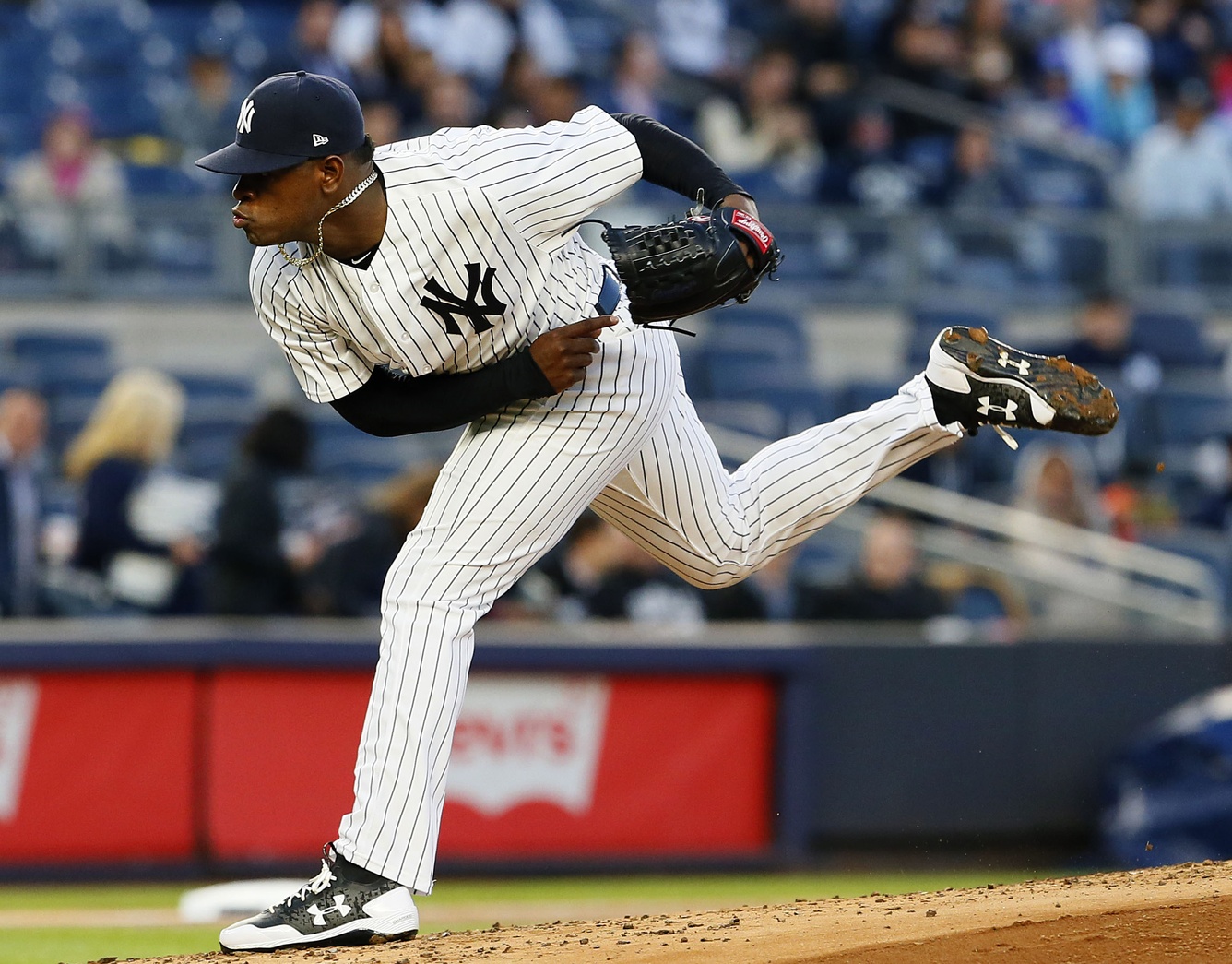At almost this exact time last season, I talked about how Luis Severino needed to widen the velocity gap between his fastball and at least one of his secondary pitches. And believe it or not, he actually has done just that — he softened the velocity on his slider last season, and then he’s done so again this year.
| Year | FB Velo (MPH) | SL Velo (MPH) | FB-SL Velo Gap (MPH) | SL Vert Movement (in.) |
|---|---|---|---|---|
| 2015 | 95.3 | 89.3 | 6.0 | 2.44 |
| 2016 | 96.1 | 88.3 | 7.8 | 0.03 |
| 2017 | 96.8 | 87.3 | 9.5 | -1.14 |
His slider has lost exactly one mile per hour in each of the last two seasons. And it isn’t like it’s due to declining velocity overall, either. His fastball has actually gotten faster every season, so the velocity gap between the two has grown almost 50% over the last two years. And if you want to take into account the fact that velocity readings are being interpreted differently this season, then he’s taken even more off of his slider than just one MPH.
Intuitively, you’d think that taking a bit off of a breaking ball would create more two-plane break, especially with a slider that was as firm as Severino’s. If you take a look at the rightmost column in that table (pitch movement data courtesy of Brooks Baseball), the data would seem to agree. Remember, vertical movement is measured on a Y-axis, where negative numbers mean downward movement. Sliders with more horizontal break and lower vertical break (or a more positive number in the vertical movement) would look more like the shape of Sergio Romo’s slider, as an extreme example. Sliders with a more negative value in the vertical movement category would look more like Brad Lidge’s slider in his prime, dropping sharply off of the table.
For reference, this is what Severino’s slider looked like during his rookie year in 2015. (This was actually the first punchout of Severino’s career.)
Ignoring the hilarious fact that the pitch was clearly a ball (and Xander Bogaerts’ understandingly accompanying reaction), you can tell that the slider had much more of a cutter-like shape to it. A pitch like this would be useful for busting a lefty in on the hands, but in most other scenarios, it isn’t as effective because it stays on the same bat plane as the fastball.
In contrast, take a look at Severino’s slider during his most recent start on Tuesday.
Sure, the horizontal break away from the right-handed hitter was still useful, but it was the downward break that caused it to avoid the barrel of the hitter. This is especially useful for chases versus lefties. A pitch like a splitter, that relies almost exclusively on downward movement, tends to have neutral platoon splits, while “traditional” sliders tend to run rather extreme platoon results.
“Sure, that’s all good and dandy, but you’re not a scout! I want data! Show me the CarFax!”
I hear you back there, sir — no need to shout.
| Year | % of K’s via SL | Opp. OPS vs. SL | Chase% vs. SL | Contact% vs. SL |
|---|---|---|---|---|
| 2015 | 26.8 | 0.657 | 22.4 | 79.9 |
| 2016 | 43.9 | 0.616 | 37.0 | 74.5 |
| 2017 | 48.1 | 0.394 | 51.2 | 59.5 |
Although it’s true that this year’s data is still extremely limited, the three-year trend should be pretty evident, especially when coupled with the velocity data from the previous table and the intuitive perspective.
Severino probably isn’t going to run a sub-.400 OPS against on his slider all season. But there’s ample reason to believe that a step forward is coming, and he should think about increasing the usage of the pitch correspondingly. Interestingly, Severino’s slider usage thus far in his career has been remarkably consistent, staying between 34 and 35 percent in each of his three seasons. The only change in his pitch usage has come from his other two offerings, as his increasing fastball utilization has decreased his changeup percentage 14 percent in 2015 all the way down to just 8 percent in 2017. Also interestingly, the scouting report on Severino coming into the league was that his best secondary pitch was his changeup, yet his slider has been his go-to pitch so far in his young MLB career.
Actually, from a scouting perspective, Severino’s three-pitch mix is starting to mirror Chris Archer’s now that Severino is getting so much more downward break on his slider, because the riding four-seam fastball and firm changeup have always been comparable. Now, there are two important facts about Chris Archer that Severino could stand to learn from — first, Chris Archer is very, very good. Second, Chris Archer throws his slider a lot. If I could somehow italicize “a lot” even more than I just did, I would. According to Pitch F/X, over 2016-17, no starting pitcher in all of baseball has thrown his slider more frequently than Archer’s 41.3 percent.
Now, player comps often do more harm than good, but the resemblance between Archer and Severino is starting to become striking. They have similar builds. They have similar deliveries, too, with the straight back, upright posture until foot strike, and lean towards first base.
And now they have similar repertoires too, apparently.
Photo: Noah K. Murray/USATSI
